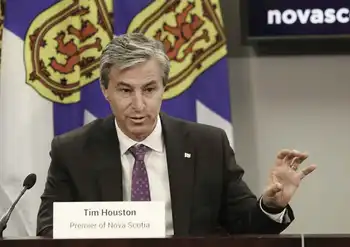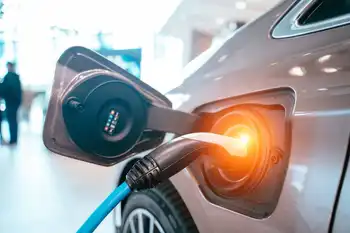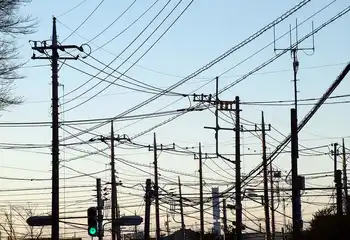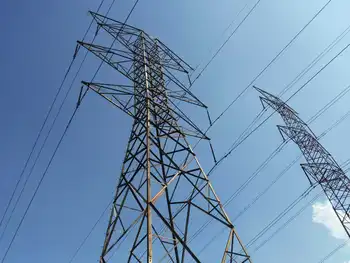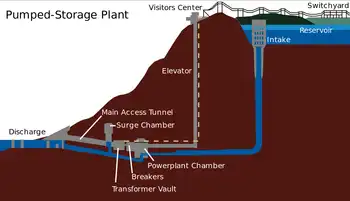Canada falling behind in clean-tech race
By Vancouver Sun
NFPA 70e Training
Our customized live online or in‑person group training can be delivered to your staff at your location.

- Live Online
- 6 hours Instructor-led
- Group Training Available
Then, once the minister had left the building, a panel of industry experts took the stage and politely scolded the federal government for failing to make clean tech a strategic priority.
“These technologies have to compete internationally if we’re going to position clean tech as the centrepiece of a green economy in Canada,” said Jayson Myers, CEO of Canadian Manufacturers and Exporters. “We have a great vision of where we’re going, but we need a coherent government policy that supports that.”
Few observers now expect a climate-change summit in Copenhagen this December to yield a breakthrough on a global treaty to succeed the Kyoto Protocol.
While climate-change negotiations have stalled, the global clean-technology industry has boomed. Between 2002 and 2008, annual investment in clean-energy technologies worldwide grew more than sevenfold to $155 billion (US). Nor is it simply governments that are ponying up. During that same period, funding by venture capitalists and private-equity investors surged to $13.5 billion (US) from $600 million (US).
“This is not just about saving the planet,” said David Henderson, managing director of XPV Capital, a Toronto venture-capital firm that specializes in water investments. “I look at this as part of an evolution of productivity that’s been going on for probably the last 30 years.”
Several countries are plowing significant portions of their stimulus packages into “greening” their economies. In the United States, $94 billion of the United States’ $787-billion stimulus package qualifies as green spending, according to a UN study.
The U.S. is pouring stimulus cash into everything from helping states use more renewable energy, to modernizing the electric grid and developing batteries for electric vehicles.
U.S. President Barack Obama compared the development of clean technologies to the space race of the Cold War era: “From China to India, from Japan to Germany, nations everywhere are racing to develop new ways to (produce) and use energy. The nation that wins this competition will be the nation that leads the global economy.... And I want America to be that nation,” he said.
Still, some U.S. analysts worry that China, which, it is estimated, builds a coal-fired power plant every week, is taking the lead. In absolute terms, no country in the world is spending more than China, which has earmarked $218 billion (US) for green stimulus.
The Chinese are building renewable-energy projects on a staggering scale. Last month, a U.S. solar manufacturer announced plans to build a solar power field in the Inner Mongolia desert that will cover roughly 65 square kilometres and supply enough power for three million homes.
CanadaÂ’s ambitions are far more modest. Canada is spending roughly eight per cent of its stimulus package on green measures, placing it 10th among the 13 countries reviewed by the UN. South Korea led with 79 per cent, followed by China, with 34 per cent, and Australia, at 21 per cent.
“Five years ago, the conversation was about Canada seizing a once-in-a-generation opportunity for leadership in clean technologies,” said Gerald Butts, chief executive of World Wildlife Fund Canada. “Now, the way the world is changing, we’re really having a conversation about getting with the program.”
The biggest green measure in the January 27 federal budget was a clean-energy fund that will dole out $1 billion over five years to research and develop clean-energy technologies.
The budget didnÂ’t earmark new funding for the governmentÂ’s ecoENERGY renewable power program, which allocated $1.43 billion in 2007 to fund wind, solar and other technologies. The program is now expected to run out of money this year, well ahead of schedule.
The Canadian Wind Energy Association is warning that the program’s expiry could kill or delay “shovel-ready” projects that would nearly double Canada’s wind capacity.
The Ontario government recently unveiled generous “feed-in” tariffs to subsidize the cost of renewable electricity. Still, the wind association says investors are already looking south of the border, where the Obama administration is betting big on wind.
Uncertainty also hangs over Sustainable Development Technology Canada (SDTC), an armÂ’s-length fund set up by the government to invest in early-stage clean-tech firms. A $350-million fund that invests in climate-change and clean-air projects will run out next month, while a $250-million fund that invests in water and soil technologies should be depleted next year, said Vicky Sharpe, chief executive of SDTC, which hosted the conference.
“SDTC is like a pipeline of clean tech, so we believe recapitalization is critical to keep feeding in the new companies so we can be out there,” said Sharpe.





